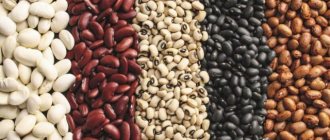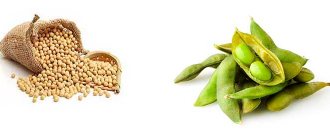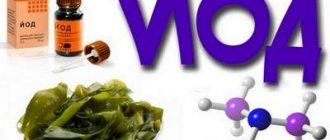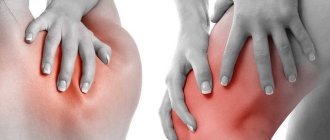Mainly cloudy. Blues. Something is clearly missing... Don't rush to swallow pills. First, let's find out what kind of “beast” vitamin D is, where it is found, and in which products it is easiest to find to make up for the deficiency.
It is called the sunshine or vitamin of youth and longevity. It is especially important in the autumn-winter period: it helps protect against infections, maintain vigor, and avoid depression.
Vitamin D is produced naturally in the body under the influence of ultraviolet rays. If this is not enough, food comes to the rescue.
Getting Vitamin D Naturally
Vitamin D (D) includes a group of biological substances. The main connections include the following:
- ergocalciferol (D2);
- cholecalciferol (D3).
All elements are obtained through food. And D3 is also produced under the influence of sunlight. Therefore, in addition to proper nutrition, walk more during the day, in good weather.
Good to know! Good news for girls. Cholecalciferol is also synthesized with the help of ultraviolet rays. So, your favorite solarium is a group D source. You just can’t stay there for a long time. Abuse of this procedure promises cancer.
Sufficient content of beneficial vitamin D gives positive results:
- Calcium and magnesium begin to be better absorbed by the body. This means the skeletal system improves.
- Blood sugar levels are normalized.
- Growth and development of healthy cells, which helps prevent a number of diseases. Calciferol is prescribed for preventive purposes starting from infancy.
- The nervous system and muscle function are normalized.
- Immunity increases.
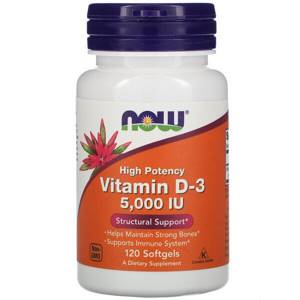
Now Foods, Vitamin D-3, High Potency, 5000 Dosage, 120 Softgels
516 ₽
Buy at a discount
The main purpose of D is to saturate the body with calcium and phosphorus.
Basic foods containing vitamin D in large quantities will help significantly improve your health. Also, do not forget about nature - the sun's rays (d3).
Watch the video and learn a lot of useful information:
Excess phosphorus
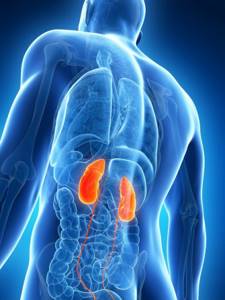
An overdose of a microelement in the body affects the kidneys: the process of stone formation in them starts, in addition, anemia and leukopenia develop, bones weaken, and there is a threat of osteoporosis.
The greatest danger to humans is excess white phosphorus. An increased content of the compound in the body causes headache, vomiting, burning sensation in the stomach, mouth, jaundice, and weakness. In chronic poisoning, the nervous and cardiovascular systems are affected and calcium metabolism is disrupted.
Unlike white phosphorus, red phosphorus is harmless. Chronic excess of the substance in the body causes pneumonia.
Causes of phosphorus overdose:
- excessive consumption of carbonated drinks (lemonade), canned foods;
- unbalanced diet, oversaturated with protein components;
- metabolic disease.
Today, excess phosphorus in the human body is much more common than its deficiency. The reason for this statistics is the widespread use of trace element compounds in the food industry (E338, E340 – E343). These phosphates are required for proper storage of bulk food products (dry cream and milk, coffee, cocoa). In addition, the compounds provide a soft consistency to processed cheeses, prevent crystallization of condensed milk, increase the shelf life of meat and milk products, increase the weight and volume of sausages, and acidify soft drinks.
Signs of an overdose of phosphorus in the body:
- hemorrhages, decreased blood clotting;
- salt deposits;
- decreased immunity (leukopenia);
- development of osteoporosis;
- minor hemorrhages on the retina;
- diseases of the digestive tract, especially the liver;
- anemia.
Best materials of the month
- Coronaviruses: SARS-CoV-2 (COVID-19)
- Antibiotics for the prevention and treatment of COVID-19: how effective are they?
- The most common "office" diseases
- Does vodka kill coronavirus?
- How to stay alive on our roads?
Remember, excess phosphorus causes calcium deficiency and also impairs magnesium absorption. Therefore, to eliminate the symptoms of the consequences of an overdose, doctors prescribe aluminum hydroxide, which binds and slows down the absorption of phosphates.
How much calciferol is in fish and seafood
Marine components are considered the most nutritious in terms of nutrients. Table 2 will tell you the exact content of vitamin D in fish products.
Table 2. D2 in fish and seafood
| Name | Amount d in 100 g, mcg |
| River perch | 3 |
| Tuna | 5,7 |
| Black caviar | 8 |
| Pink salmon | 10,9 |
| Salmon | 11 |
| Mackerel | 16,1 |
| Chum fish | 16,3 |
| Fatty herring | 30 |
| Canned cod (liver) | 100 |
| Fish oil (cod) | 250 |
A high level of vitamin D is found in fatty fish, namely herring. The richest offal is cod liver. We can safely conclude that this is the most saturated category where you can get calciferol.
Interesting! Seaweed covers 48% of the daily value of nutrients D.
About daily requirement
Everyone needs vitamin D, but there are no general and universal norms for the daily intake of calciferol for an adult. Depending on gender, habitat, skin color, and lifestyle characteristics, they vary.
In addition, the need for the substance varies by age. It also increases in those who: live in northern regions, are nocturnal, live in polluted cities, are over 75 years old or for children under 3. Nursing mothers and pregnant women also need large doses. For vegetarians and vegans the standards are also increasing.
Below is a table containing the daily norm and a list of different categories:
| category | age | norm in mcg |
| kids | up to 3 years | 10 |
| children | 4-10 | 2,5 |
| teenagers, adults | 11-75 | 2,5 |
| pregnant and lactating women | any | 10 |
However, recently the daily requirement of the human body for vitamin D has been revised upward.
The role of vitamin D in maintaining human health is explained by Dr. Komarovsky in the video.
I recommend good materials about the role of vitamin D and its specific benefits for men, as well as for the beauty and youth of women.
Group D in eggs and derivative products
Another popular category is eggs. Many people use them every day, thereby practically satisfying the daily requirement of calciferol. We find out the vitamin D content in products in Table 3.
Table 3. “D” in eggs
| Name | D in 100 g, mcg |
| Quail | 1,4 |
| Chicken eggs | 2,2 |
| Egg powder | 5 |
| Yolk | 7,7 |
On a note! Calciferol is easily absorbed by the body, no matter in what form it is taken.
According to the list of foods that contain vitamin D, the yolk is secreted. And this is one of the most accessible and sought-after components in food.
Literature
- Gromova, O. A. Vitamin D: Paradigm change / O. A. Gromova, I. Yu. Torshin. - M.: GEOTAR-Media, 2021. - 568 p. — ISBN 978-5-9704-4058-2.
- Vitamin D deficiency in adults: Diagnosis, treatment and prevention: Clinical guidelines / Russian Association of Endocrinologists, Federal State Budgetary Institution "Endocrinological Research Center". - M.: Ministry of Health of the Russian Federation, 2015. - 75 p.
- "Office of Dietary Supplements - Vitamin D." ods.od.nih.gov. October 9, 2021. Retrieved October 31, 2021.
- MacDonald J (July 18, 2019). "How Does the Body Make Vitamin D from Sunlight?" JSTOR Daily. Retrieved July 22, 2021.
- Bi WG, Nuyt AM, Weiler H, Leduc L, Santamaria C, Wei SQ (July 2018). "Association Between Vitamin D Supplementation During Pregnancy and Offspring Growth, Morbidity, and Mortality: A Systematic Review and Meta-analysis". JAMA Pediatrics. 172(7):635–645. doi:10.1001/jamapediatrics.2018.0302. PMC 6137512. PMID 29813153.
How much calciferol is in milk and derivative products
There are few dairy products that contain vital vitamin D (see Table 4). This nutrient is most found in high-fat foods - ghee and butter.
Table 4. Which dairy products contain the most vitamin D?
| Name | D per 100 g, mcg |
| Suluguni | 0,71 |
| Processed cheese Russian | 0,74 |
| Peshekhonsky cheese, 45% | 0,84 |
| Dutch cheese, 45% | 0,86 |
| Camembert cheese | 0,93 |
| Russian cheese | 0,96 |
| Cheeses 50% (cheddar and Swiss) | 1 |
| Goat and cream | 1,3 |
| Unsalted butter | 1,5 |
| Ghee | 1,8 |
Although Suluguni cheese is far from the best source of vitamin D, it contains many other useful elements. From the data in Table 4, it can also be understood that milk contains virtually no vitamin D.
Vitamin D in mushrooms
There are a couple of species of mushrooms that contain vitamin D (see Table 5).
Table 5. Products with vitamin D: list of mushrooms
| Name | D per 100 g, µg |
| Champignon | 0,1 |
| White | 0,2 |
| Shiitake | 0,4 |
| Oyster mushroom | 0,7 |
| Morel | 5,1 |
| Chanterelles | 5,3 |
Vitamin D is not easy to obtain in foods such as mushrooms. Good if you are a fan of chanterelles or morels. Otherwise, pay attention to other categories where the desired nutrient is present.
Category: oils
There are no vegetable oils with D2. Everything went into animal fats (see Table 6).
Table 6. Oil products rich in vitamin D
| Name | D in 100 g, mcg |
| Mayonnaise | 0,2 |
| Goat and cream | 1,3 |
| Unsalted butter | 1,5 |
| Ghee | 1,8 |
Mayonnaise, which contains the least amount of vitamin D in this category, is recommended to be consumed in its natural form.
Contraindications
Supplements with calcium and cholecalciferol are not prescribed in the following cases:
- individual intolerance or allergic reactions to the components of the drug;
- severe hypercalcemia, hypercalciuria;
- increased blood clotting, thrombosis of the veins of the lower extremities;
- severe renal failure;
- massive atherosclerosis, unstable angina.
Supplements are allowed to be taken:
- during pregnancy and lactation, when the benefits of their use outweigh the potential harm to the child;
- children, but under strict medical supervision.
Where can vegetarians get calciferol?
Vegetarians receive natural sources of plant origin with the highest level of vitamin D. And there are few of these in nature:
- chanterelles (5.3 mcg), morels (5.1 mcg);
- walnuts.
Plants:
- nettle;
- alfalfa;
- dandelion;
- oats;
- parsley;
The proportion of D2 in mcg in plants and nuts is difficult to calculate. The fact is that vitamin D in such food is contained in minimal quantities. There is no such nutrient in the presses, including the most popular - flaxseed and olive. Some supporters of plant-based nutrition allow fish into their diet - it is much easier for them to saturate the body with D2 nutrients.
Vegetarians should pay attention to dietary supplements: in addition to animal origin, calciferol is also found in vegetarian capsules.

Natural Factors, Vegan Vitamin D3, 50 mcg (2,000 IU), 90 Vegetarian Capsules
1 028 ₽
Buy at a discount
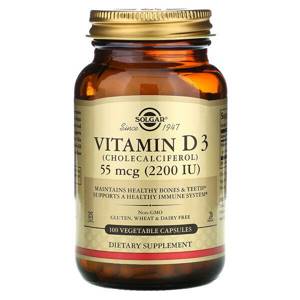
Solgar, Vitamin D3 (Cholecalciferol), 55 mcg (2,200 IU), 100 Veggie Caps
★★★★★
870 ₽
Buy at a discount
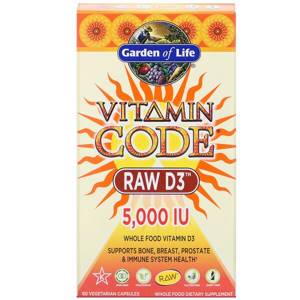
Garden of Life, Vitamin Code, Raw D3, 5,000 IU, 60 Vegetarian Capsules
★★★★★
1 537 ₽
Buy at a discount
Lots and lots of sun will also help (d3). Take daily walks for at least 1 hour, preferably longer. And mushrooms, which contain the most vitamin D from a vegetarian diet.
Instructions for use
Vitamins are medications, so to get the most benefit from your supplements, you must follow the manufacturer's instructions. Before starting the course, it is advisable to consult a doctor so as not to harm the body.
Doses and time of administration
The daily norm of cholecalciferol is 600 IU.
Recommended calcium dosages:
- from 18 to 50 years – 1000 mg;
- over 50 – 1200 mg.
Vitamin D3 and calcium supplements should be taken at the same time of day with meals. The tablets can be swallowed whole with plenty of water.
Adverse reactions
In the first days after taking vitamins, the following reactions may occur in the gastrointestinal tract:
- short-term dyspeptic disorders;
- nausea, cramping abdominal pain.
Sometimes constipation or diarrhea occurs, but stools return to normal 3-5 days after taking dietary supplements. Allergic rashes and skin itching are also observed, and urticaria may develop in sensitized patients.
Signs of overdose
Excessive consumption of calcium supplements with vitamin D3 leads to increased side effects, hypercalcemia, the symptoms of which are nausea, excruciating thirst, vomiting, constipation and severe stomach pain. In patients with impaired renal function, nephrolithiasis and nephrocalcinosis may occur, and urinalysis may worsen. People who take alkalis at the same time as calcium sometimes develop milk-alkali syndrome and the following symptoms:
- Strong headache;
- lack of appetite;
- frequent urge to urinate.
In these cases, medications with calcium and D3 are discontinued. Severe forms are treated in a hospital. Parenteral rehydration is used, diuretics are used in the morning under the control of CBS indicators. Subsequently, a diet with a limited calcium content is prescribed.
Storage rules
The additive is stored in a place protected from ultraviolet rays at a temperature of 15 to 25 degrees and air humidity of no more than 60%.
Shelf life – 3 years.




